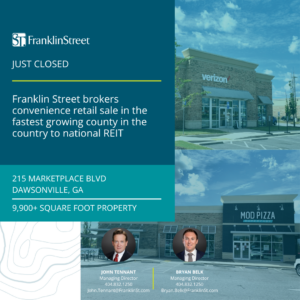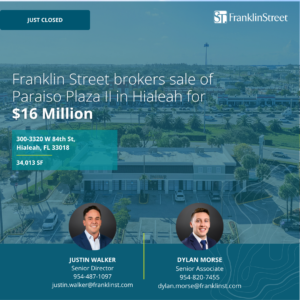U.S. economic growth braked sharply in the 3rd quarter as businesses cut back on restocking warehouses to work off an inventory glut. Gross domestic product increased at a 1.5% annual rate after expanding at a 3.9% clip in the 2nd quarter. view source
The blow from inventories was blunted by bullish consumers, who are getting a tailwind from cheaper gasoline and firming housing and labor markets. Consumer spending, which accounts for more than two-thirds of U.S. economic activity, grew at a 3.2% rate after expanding at a 3.6% pace in the 2nd quarter. view source
On the supply side, crude inventories remain near record levels. Demand, however, may soften in the coming months. The International Energy Agency (IEA) is forecasting global demand to fall to 1.2 million barrels per day from 2015’s 5-year high of 1.8 million barrels per day. view source
The number of new home sales in September dropped 15.2% from August to an annual rate of 468,000 units, sharply lower than estimates and the lowest level since November 2014. Pending sales of previously owned homes also fell 2.3% in September, surprising economists who expected a slight increase. view source
The homeownership rate in the U.S. also ticked up for the first time in two years, to 63.7 percent in the third quarter to 63.4 percent in the second quarter. Still, the rate remains below last year’s level. view source
At their mid-December meeting, Fed policymakers will consider raising the rate if the economy continues to grow at a strong enough pace to keep adding jobs and push annual inflation toward the 2% target. view source
The Fed held off raising rates off their historic lows near 0% in September because of the global economic slowdown that sent the stock market plunging in August. There have been some signs of stability since the summer.
A December rate hike seems more likely by the day. Stocks have recovered nearly all of their losses from the summer, financial markets have calmed in China and elsewhere, and the U.S. economy continues to slowly improve. view source
Leading multifamily REITs are selling off properties. REITs usually need to keep growing to help keep their stock prices rising. But leading apartment REITs have become net sellers this year. view source
Usually, class-A communities have significantly fewer vacant apartments than class-B communities. From 2003 to present, the class-A apartment vacancy rate averaged 5.2%. That’s 40 bps lower than the vacancy rate for class-B apartments. That difference has vanished as class-B apartments catch up to class-A-both had an average vacancy rate of 4.9% over the last two years. However, rents have grown slowly at class-B apartments over the last few years, at a rate of approximately 2% a year, compared to more than 3% for class-A apartments. view source
Walgreens Boots Alliance Inc. recently announced plans to acquire Rite Aid, and the $17.2 billion deal would pare the drug store sector to two national players-Walgreens and CVS. The acquisition will likely have a significant impact on the retail real estate industry, particularly the net lease sector. view source
Cap rates for single tenant CVS, Rite Aid and Walgreens properties reached a new historic low in the third quarter 2015. CVS properties have the lowest cap rate at 5.45%, while Walgreens are trading at 5.5% cap rate. Rite Aid, currently not investment grade credit, is trailing at 6.63%. view source
When it comes to the Walgreens-Rite Aid deal, the worst case for a net lease investor would be a store closure. Even then, the tenant would still be paying rent on a dark store. The best case scenario for a net lease investor would be better credit. view source
The office tenant base is growing faster than new development can keep up with, forcing the national office vacancy down in the third quarter to its lowest point since the recession and pushing up rental rates. Office vacancy fell to 13.5% in the third quarter, according to a market report from commercial real estate services firm CBRE, a decline of 80 bps from 14.3% in the third quarter of 2014. view source
Demand for stabilized medical office buildings (MOBs) and new development is on an upswing, with cap rates matching pre-recession record levels. The average cap rate for performing MOBs declined to 6.5% in the first half of 2015, almost reaching the record low of 6.2% achieved in the third quarter of 2007. view source
Self-storage has become one of the hottest sectors of commercial real estate by earning a reputation as a proven asset class that offers owners and investors superior returns. It has gained recognition as one of the most recession-proof property types. The constant and growing need for storage in U.S. households has strengthened the sector, especially in an environment where many are downsizing their homes. view source
The challenge of placing capital in commercial real estate is likely to persist in the near term. The flow of capital into U.S. real estate continues to increase, with total acquisition volume for the 12 months ending June 30, 2015 at $497.4 billion, up 24.6% year-over-year. view source
Generally, investors are sticking with the four main food groups of office, industrial, retail and multifamily, where they are more comfortable. However, more investors are willing to take on greater risk within those sectors, such as investing in new development or redevelopment opportunities. Investors willing to consider alternative assets on the fringes of commercial real estate, such as cell phone towers, car dealerships or ski resorts, is something that’s occurring more on a case-by-case basis. view source
Persistent low rates and improving property fundamentals have encouraged many borrowers to prepay loans, despite the monetary penalties involved. Nearly $50 billion in CMBS loans fell into the prepay category in June, as borrowers looked to lock in good rates and take advantage of recovering property values. view source
A variety of initiatives under consideration by lawmakers and regulators have the potential of changing the commercial real estate market in 2016 and beyond. One of the most significant is a proposal in Congress that would overhaul FIRPTA. The act’s primary objective has been to ensure that foreign investors pay federal taxes on gains from sales of real property. view source



